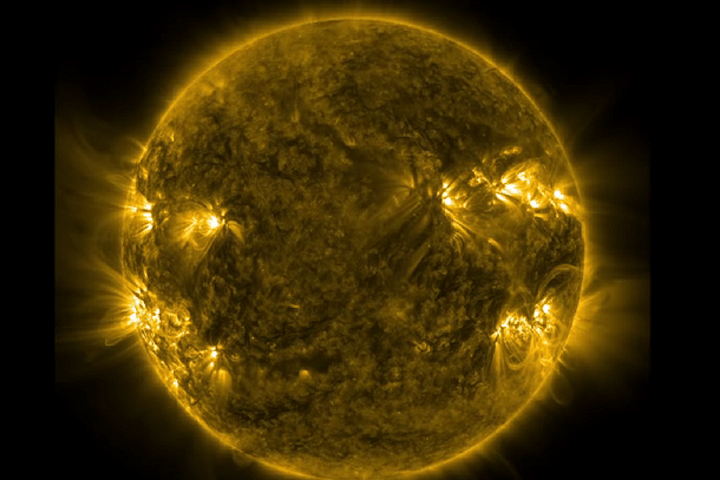24.02.2022

A Large Area Soft X-ray Spectrometer (CLASS), a payload on-board Chandrayaan-2 Orbiter, has detected solar proton events which significantly increase the radiation exposure to humans in space, the Indian Space Research Organisation has said.
The instrument on January 18 also recorded coronal mass ejections (CMEs), a powerful stream of ionised material and magnetic fields, which reach the Earth a few days later, leading to geomagnetic storms and lighting up the polar sky with auroras, the ISRO said on Wednesday.
"Such multi point observations help us understand the propagation and its impact on different planetary systems," the space agence said in a statement.
When the Sun is active, spectacular eruptions called solar flares occur that sometimes also spew out energetic particles (called Solar Proton Events or SPEs) into interplanetary space.
Most of these are high energy protons that impact space systems and significantly increase radiation exposure to humans in space. They can cause ionisation on large scales in Earth's middle atmosphere, the ISRO said.
Many intense solar flares are accompanied by coronal mass ejections (CMEs), a powerful stream of ionised material and magnetic fields, which reach Earth a few days later, leading to geomagnetic storms and lighting up the polar sky with auroras.
Solar flares are classified according to their strength. The smallest ones are A-class, followed by B, C, M and X. Each letter represents a 10-fold increase in energy output. This means that an M class flare is ten times intense than C-class flare and 100 times intense than B-class flare.
Within each letter class there is a finer scale from 1 to 9 i.e a M2 flare is twice the strength of M1 flare.
Recently, there were two M-class solar flares. One flare (M5.5) spewed out energetic particles into interplanetary space and the other flare (M1.5) was accompanied by a Coronal Mass Ejection (CME).
SPE event was seen by NASA's Geostationary Operational Environmental Satellite (GOES) satellite orbiting around Earth. However, the CME event was not detected by GOES, the space agency said.
“Chandrayaan-2 Large Area Soft X-ray Spectrometer (CLASS) on-board Chandrayaan-2 Orbiter detected SPE due to an M5.5 class solar flare that occurred on January 20, 2022,” the ISRO said.
"CLASS instrument also detected CME event as it passed through the moon due to an M1.5 class solar flare that occurred on 18 January," it added.
The CME travels with a speed of about 1000 km/s and it takes about 2-3 days to reach Earth.
"The signature of this event is missed by GOES satellite, as Earth magnetic field provides shielding from such events. However, the event was recorded by Chandrayaan-2," the space agency said.
"The CLASS payload on Chandrayaan-2 saw both the SPE and CME events pass by from two intense flares on the Sun," it added.
Quelle: Swarajya
